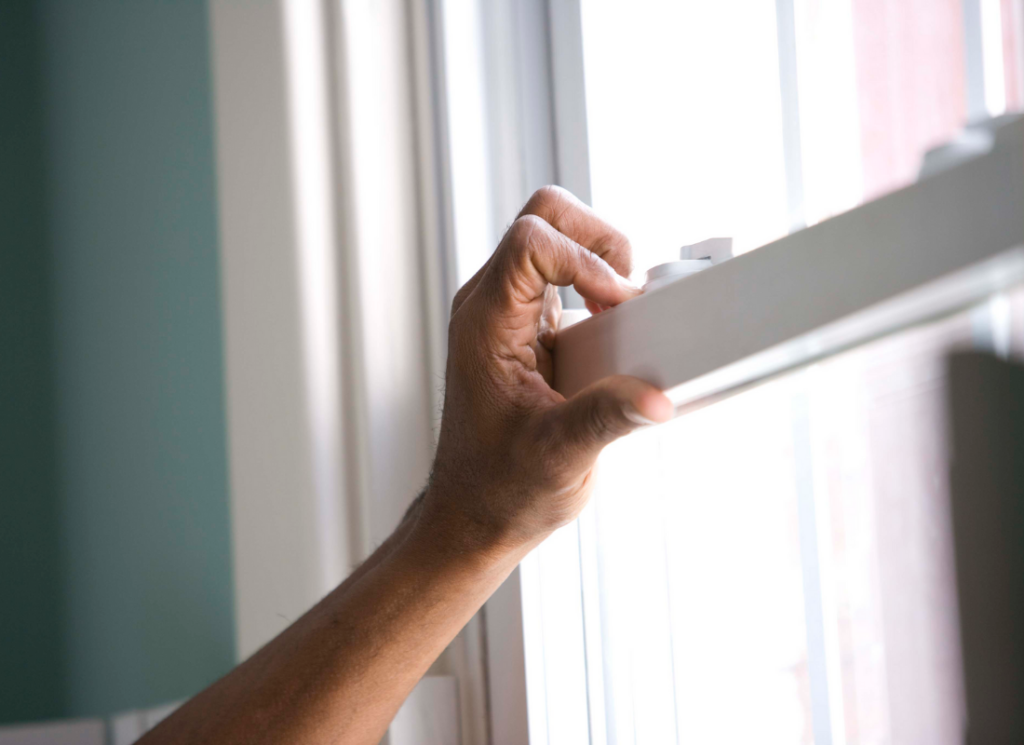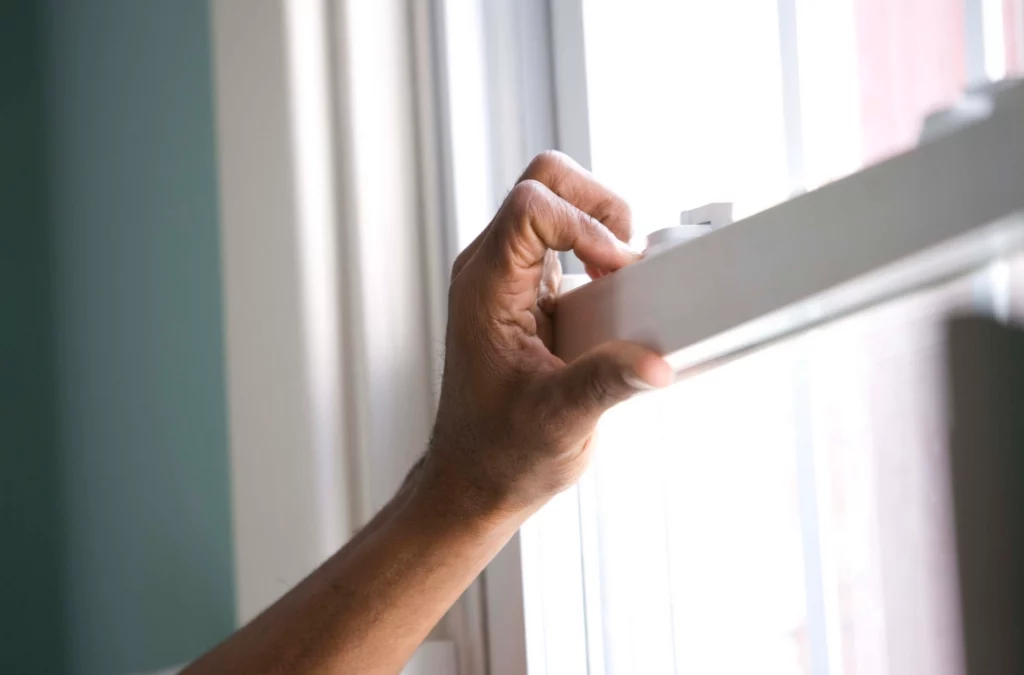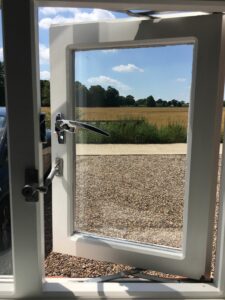Improving your home ventilation can be a relatively simple exercise, but the benefits of letting fresh air into your home cannot be understated. Proper ventilation in the home can greatly improve the general health and wellbeing of your entire family. Fresh air is an essential ingredient for healthy living, it gives your cells the fuel they need to function optimally and leads to healthier lungs, heart and brain. It also helps keep you from getting sick by breathing stale air that may be full of germs and other impurities. This last point is even more relevant now, during the Covid-19 Pandemic where we are seeing more and more how easy it is to get sick from simply sharing the air of those around you.
By allowing you to control the humidity of a room, proper home ventilation also helps you prevent the build up of damp in your home, which in turn stops the formation of moulds and mildew that can have a serious impact on your health.
This article will explore the world of home ventilation to help you better understand what it is, how natural and artificial ventilation differ and what measures you can take to improve the ventilation in your home, now and after the pandemic.
What is home ventilation?
To put it simply home ventilation refers to the exchange of indoor and outdoor air. During the course of everyday, there is a buildup of pollutants as well as excess carbon dioxide. Adequate ventilation allows this polluted air to leave the room and be replaced by cleaner, oxygen-rich air.

Ventilation can either be natural i.e. air that flows through your home through open windows or doors, or mechanical, which refers to systems installed in the home to help circulate air in the home. There are a variety of mechanical ventilation systems tailored for warm and cold climatic conditions, but this article will focus primarily on natural ventilation methods, which are easy to implement in the home.
What is natural home ventilation?
Natural home ventilation is any form of ventilation that doesn’t rely on a machine or system to circulate fresh air in your home. This can be as simple as opening any door or window, but it is important to note that an open window doesn’t necessarily mean a ventilated home, the key is circulation and airflow. When a home has adequate airflow, carbon dioxide and impurities can be replaced with fresh, oxygen rich air that results in healthier living conditions.
The major advantages of natural home ventilation is that it doesn’t require the installation of costly, energy consuming and complicated mechanisms, instead letting natural air currents do the hard work. Not every home can achieve optimal airflow, but if you feel the air in your home is stagnant, there are measures you can take to improve the natural flow.
How to optimise natural home ventilation
Creating optimal ventilation isn’t as easy as just opening a few windows (although this is still a very important part). In many instances air currents don’t naturally move through a home, or an external factor is preventing them from doing so. Luckily, there are a number of measures you can take optimise ventilation in your home.
Ground coverings
Artificial surfaces such as concrete or paving absorb and then radiate heat, while natural surfaces such as flower beds, water or grass are low heat absorbing materials. These natural surfaces greatly enhance the natural air circulation in a home.
Water elements
Air that moves over water is naturally cooled, and this means that when it moves through your home it brings this coolness inside. If you have a larger garden swimming pools and water features will serve this purpose, but even regular irrigation of your lawn can help bring the cool, moist air inside.
Bamboo furniture
Bamboo furniture usually features an open construction that allows for better airflow. While this makes it popular for outdoor furniture, the same principle applies inside your home, where bulky furniture can interfere with natural air currents.
Keep your windows open
This may well be the most important point listed here, to achieve natural home ventilation you need a source of air. Most windows are designed to open and let in fresh air, but in many cases people are reluctant to leave them open. The reasons for this may include child safety, inclement weather and home security.
A device such as LockLatch is the perfect solution for anyone facing these issues. LockLatch is a lockable window and door latch that lets you keep your window open, but securely locked in place. The adjustable, C304 stainless steel arm means that the width of the opening can be tailored to your needs, whether it is keeping children and pets inside, or burglars and bad weather out.
Window height and orientation
If you are lucky enough to still be in the design phase of your home, you can build good ventilation into the design. The key to optimum air flow is cross ventilation where air can move in from one side of a room and out the other, by placing windows, doors and vents strategically you can ensure that your home naturally regulates airflow in every room.
Window Deflectors
Window deflectors come in a variety of shapes and sizes, and provide a great way to improve airflow around doors, windows and vents where it is less than optimal. Awnings, overhangs, louvers or slats all help direct air into your home.
Keep doors open
Just like windows, doors are one of the best ways to get fresh air into your home, but they suffer from the same pitfalls. Leaving an exterior door open creates a security risk, which could allow an opportunistic burglar to gain access to your property. If you need to open your door to let fresh air in, you should consider installing a LockLatch that allows you to keep it ajar, but also locked. Because the LockLatch is designed to be installed quickly onto any surface it is a viable solution for almost every type of door from heavy wood, to aluminium sliding doors.
Transitional spaces
Open spaces greatly assist airflow, so if you are still in the design phase, incorporating courtyards, balconies and even atriums into the design of your home can improve overall ventilation. If you are an existing home owner you can look at opening up space, by moving furniture around, or if you need drastic change, taking down a non load bearing wall.
Advantages of natural home ventilation
We’ve already briefly touched on a few of the advantages of natural home ventilation, but we thought this would be a good time to explain why it is imperative that your home has constant access to fresh air.
Energy costs
Because your home is cooler and filled with fresh air, there is less need for energy consuming devices such as air conditioners, fans and other mechanical home ventilation appliances. Reducing your energy consumption is not only great for your wallet, but also great for the whole planet.
Air quality improvement
Improved air quality leads to a healthier heart, lungs and brain. Oxygenated air improves your sleep and helps you to wake up feeling sharp and ready to tackle the day ahead. You really can’t put a price on your health, and by simply improving the ventilation in your home, you can have a massive impact on your wellbeing.
Less chemical substances
Poor ventilation in the home not only leads to the buildup of carbon dioxide, but also various other chemicals. These may come from internal sources such as cleaning products, but may also come from outside in the form of pollution. Proper ventilation allows these chemicals to be flushed from the home giving you cleaner air.
Temperature and humidity regulation
Being able to control your airflow helps regulate the temperature of your home. A breeze moving through the home can be a great source of relief on a sweltering day, while shutting the window in bad weather can help keep warmth in. If you do close your windows it is important to air the room afterwards, as the buildup of humidity can lead to damp problems in the home.
How to improve air quality using devices
If your home doesn’t allow you to achieve adequate natural ventilation it may be required that you explore mechanical ventilation devices. While these devices may not share all the benefits of natural home ventilation, they still deliver cleaner, healthier air, and should be employed in every home that suffers from inadequate airflow.
Using a HEPA filter on your vacuum
High-Efficiency Particulate Air (HEPA) filters are mechanical devices which force air through a fine mesh, designed to catch things like pollen, pet hair, dust mites and tobacco smoke. By fitting a HEPA filter to your vacuum cleaner you can greatly improve the air quality in a room after cleaning.
Install a bathroom extractor fan
Bathrooms often suffer from poor ventilation due to the lack of windows. They are also prone to the build of stale and dirty air due to using the toilet or bathing. An extractor fan can help in removing stale air and creating a vacuum to let cleaner air in from adjacent rooms or spaces.
HVAC filter
An HVAC filter serves a very similar purpose to a HEPA filter on your vacuum cleaner in that it traps unwanted particles in the air, but this filter is designed for heating units, ventilation devices and air conditioners. Usually these filters are low cost fibreglass filters, but they also come in pleated metal and more expensive reusable forms. HVAC filters help remove dust and other unwanted particles from the air and if your home uses heating units or air conditioning it is important to ensure that HVAC filters are clean and functioning correctly.
Kitchen extractor fan
Just like the bathroom, the kitchen is often one of the rooms in the home that suffers from poor ventilation. Windows are often smaller because of cupboards, and unless your kitchen is open plan, there will be a buildup of Carbon dioxide in the air from cooking and people spending time in the space. An Extractor fan above the cooking area can greatly enhance air quality across the entire room.
Home ventilation amidst COVID-19
While home ventilation isn’t traditionally something we think about, the outbreak of the Covid-19 Pandemic, and it’s subsequent severity across the US, has thrown this important issue into the national conversation.
Covid-19 is transmitted either through contact with infected surfaces or through air particles breathed out by an infected person. Increased ventilation in the home, workplace or public space helps mitigate the latter form of transmission making these spaces safer for everyone interacting with them. Many of the principles we have covered in this article can be applied as added safety measures in reducing the chance of contracting the virus in your home or workplace.
Things such as keeping windows and doors open are simple, free and highly effective ways of improving airflow and thus reducing the build up of the virus in the air around us. It’s important to note that this is an added safety measure and should not be seen as replacing wearing masks or washing and sanitizing your hands regularly.
As we proceed with the vaccine rollout and hopefully stop the spread of Covid-19 it is important that we remember the vulnerabilities it has exposed to airborne infections, and it helps us remember why proper ventilation in our homes is so vitally important for our health and wellbeing.


